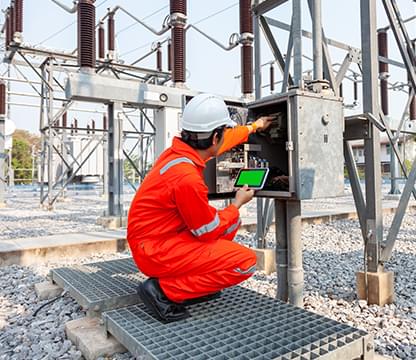Top Tips for Effective Electric System Troubleshooting
Fixing electric systems calls for a methodical method, grounded in a thorough understanding of electrical concepts and safety and security protocols. By familiarizing oneself with circuit parts, making use of important devices, and adhering to an organized evaluation method, experts can properly determine and resolve problems. The nuances of efficient fixing expand beyond simple technological expertise; understanding exactly how to record findings and prioritize safety can significantly affect results. As we explore these vital components better, it comes to be clear that grasping this process is not just useful yet crucial for success in the area.
Understand the Basics
Understanding the essentials of electric systems is crucial for effective troubleshooting, as a strong structure permits professionals to diagnose and fix issues much more efficiently. A thorough grasp of electric principles, such as voltage, current, resistance, and power, is important in identifying the origin triggers of issues. Voltage is the electrical potential distinction that drives current with a circuit, while resistance opposes the flow of present, impacting the total capability of the system.
Experience with circuit parts, including resistors, capacitors, diodes, and switches over, is also extremely important. Each element plays an unique function in circuit behavior and can impact performance when malfunctioning. Furthermore, understanding series and identical circuit setups is important, as these plans influence the distribution of voltage and present within the system.
Professionals must be aware of prospective dangers, such as shock and short circuits, to execute risk-free troubleshooting techniques. By understanding these fundamental principles, professionals boost their capacity to perform reliable diagnostics and repair services, eventually leading to improved efficiency and reliability of electric systems (electrical system troubleshooting).
Gather Necessary Equipment
Efficient troubleshooting of electrical systems needs the ideal collection of devices to detect and settle concerns precisely. A well-equipped technician can dramatically boost performance and efficiency in determining problems. Necessary tools consist of a multimeter, which gauges voltage, present, and resistance, permitting specific evaluations of electrical components. Secure meters are likewise important for measuring existing without detaching the circuit, guaranteeing safety and security and benefit.
Furthermore, shielded hand devices such as screwdrivers, pliers, and wire strippers are critical for safely controling electric links. It is also recommended to have a circuit tester handy to confirm the existence of voltage in electrical outlets and cables. For even more complicated systems, a thermal imaging electronic camera can help spot overheating elements, showing prospective failings.

Follow an Organized Technique
Having collected the suitable tools, the next action in repairing electrical systems is to follow a methodical method. A systematic strategy ensures that technicians can recognize faults effectively and accurately, minimizing downtime and stopping unnecessary repair services.
Begin by examining the system's schematic representations and requirements. Understanding the style and operational criteria will certainly supply context for click identifying issues. Next, isolate the problem location by utilizing a procedure of elimination. This involves monitoring each part methodically, beginning from the power source and functioning in the direction of the load.
Use testing devices, such as multimeters and oscilloscopes, to gather unbiased data concerning voltage, existing, and resistance at different points within the system. This empirical evidence will certainly assist your troubleshooting efforts and assist to validate or eliminate possible causes of failing.
Additionally, think about ecological elements that might influence the system's efficiency, such as temperature fluctuations or dampness ingress. A detailed examination of wiring, look here links, and parts will certainly ensure that all opportunities are accounted for.
Document Your Findings
Complete paperwork is crucial in the troubleshooting procedure of electrical systems. This practice not only aids in comprehending the origin reason of the problem but also serves as a referral for future troubleshooting initiatives.

In addition, keeping a log of components replaced or repairs performed is important. This info sustains inventory management and can aid examine the durability and reliability of specific elements.
Ultimately, the documents process ought to be comprehensive yet succinct, enabling very easy retrieval and evaluation - electrical system troubleshooting. By prioritizing detailed documents, service technicians can create a useful knowledge base that not just aids in current troubleshooting however also encourages future maintenance initiatives, thereby enhancing general system integrity

Prioritize Precaution
Recognizing the intrinsic risks connected with electrical systems is vital for guaranteeing safety and security throughout troubleshooting. Electrical shock, burns, and devices damages are simply a few of the potential dangers that technicians deal with. Focusing on safety procedures is not only a legal commitment yet also a moral essential that safeguards both the electrical system troubleshooting specialist and the surrounding atmosphere.
Before beginning any kind of troubleshooting task, specialists need to wear proper individual safety tools (PPE), including insulated gloves, shatterproof glass, and flame-resistant clothes. Making sure that the work location is dry and devoid of clutter can considerably reduce the threat of mishaps. Furthermore, it is important to de-energize circuits prior to beginning any kind of job, validating that they are not live through using a multimeter or voltage tester.
Developing clear interaction methods with team members is likewise essential; this ensures that everybody understands prospective hazards and the status of the electrical system being functioned on. Last but not least, having an emergency situation reaction plan in position can show vital in the event of an event. By prioritizing precaution, service technicians can properly alleviate risks and foster a much safer work environment.
Verdict
Effective electrical system repairing counts on a comprehensive understanding of fundamental principles and a methodical strategy. Prioritizing safety procedures makes certain the health of individuals involved and the honesty of the electric system.